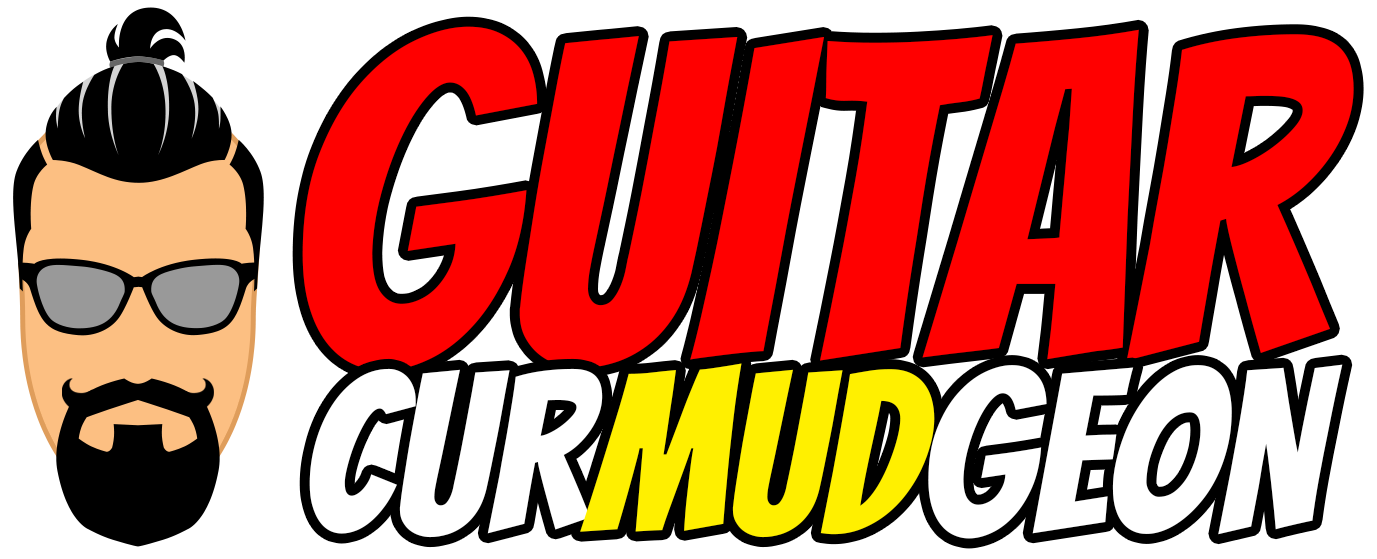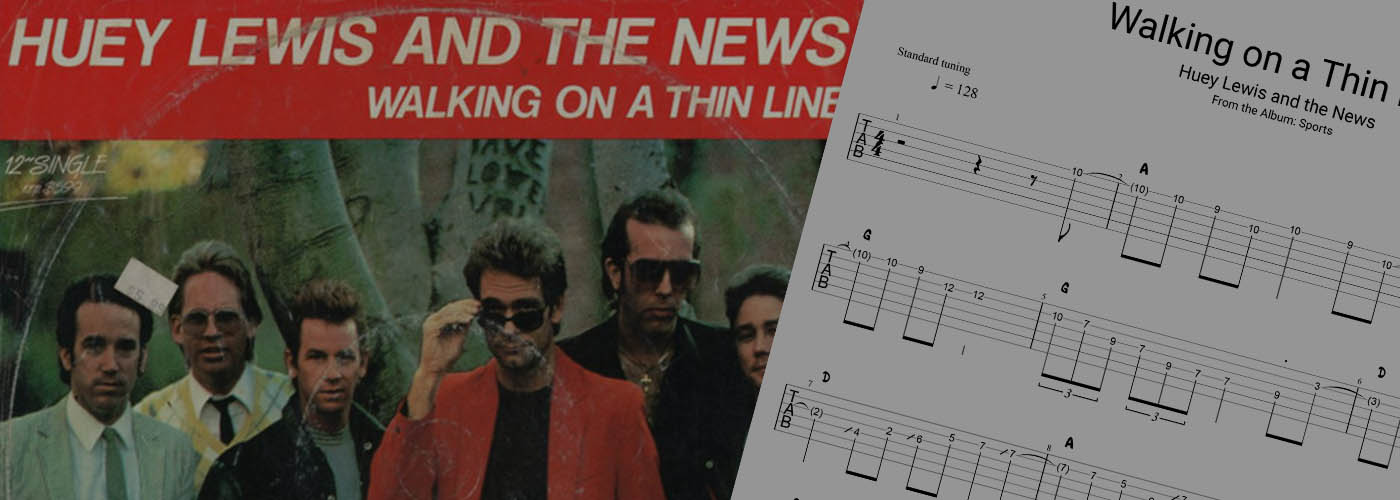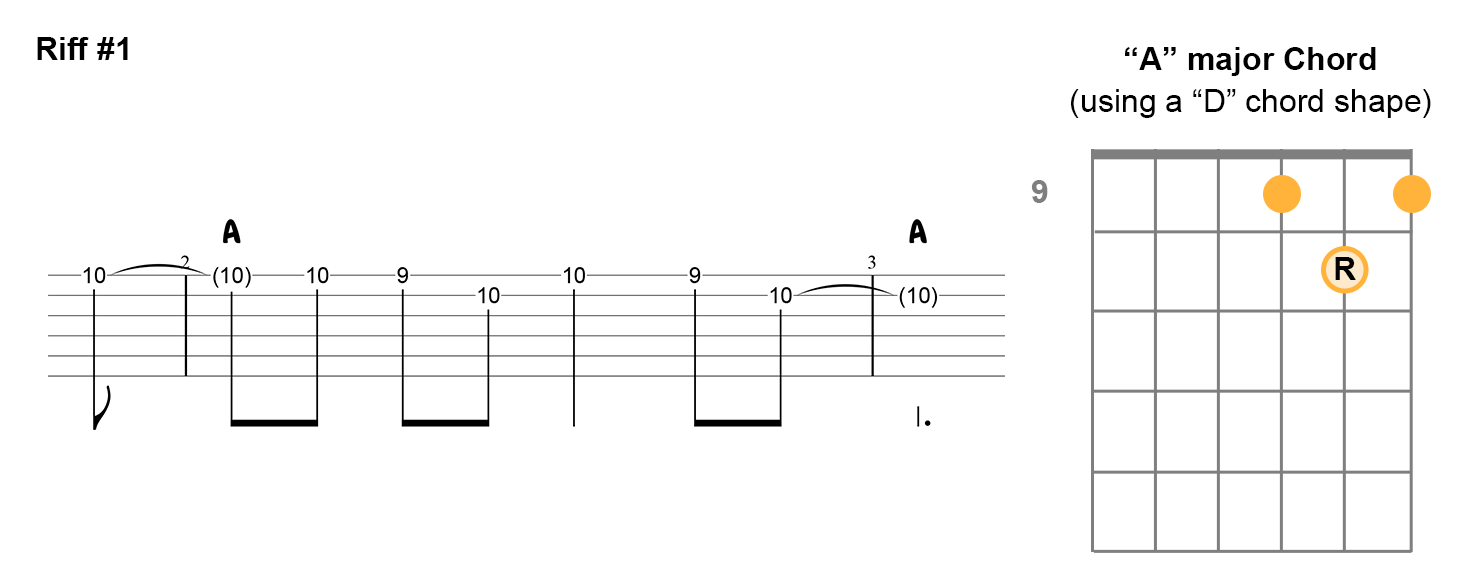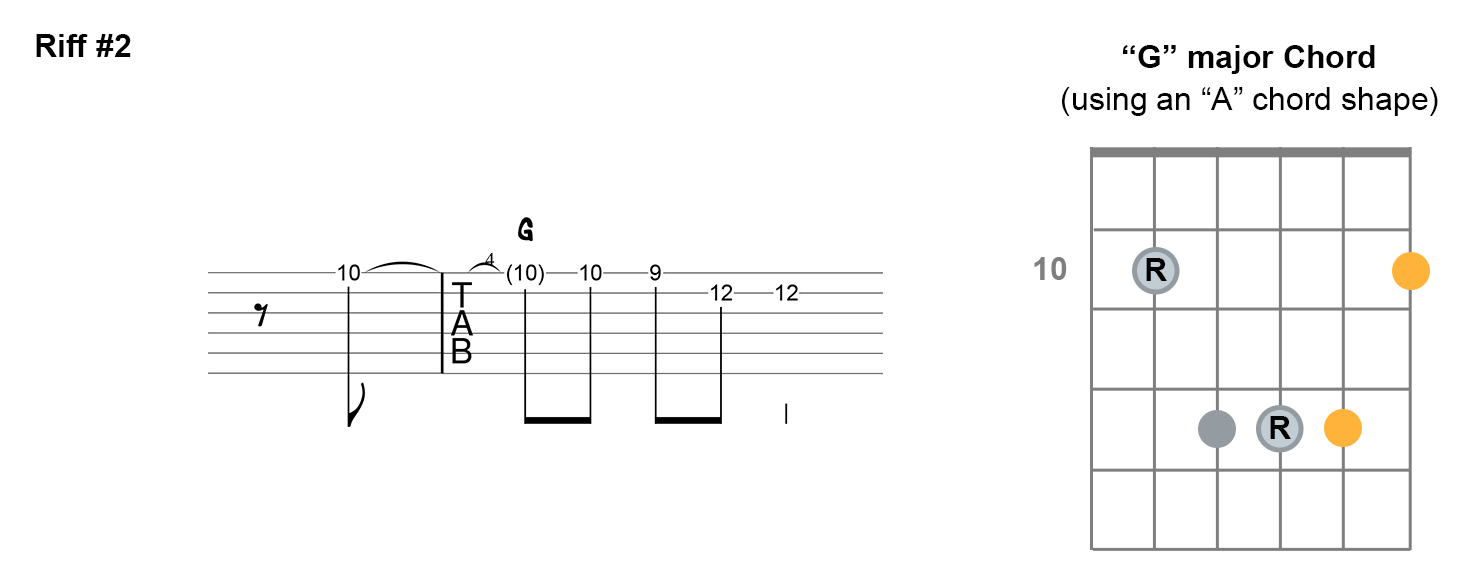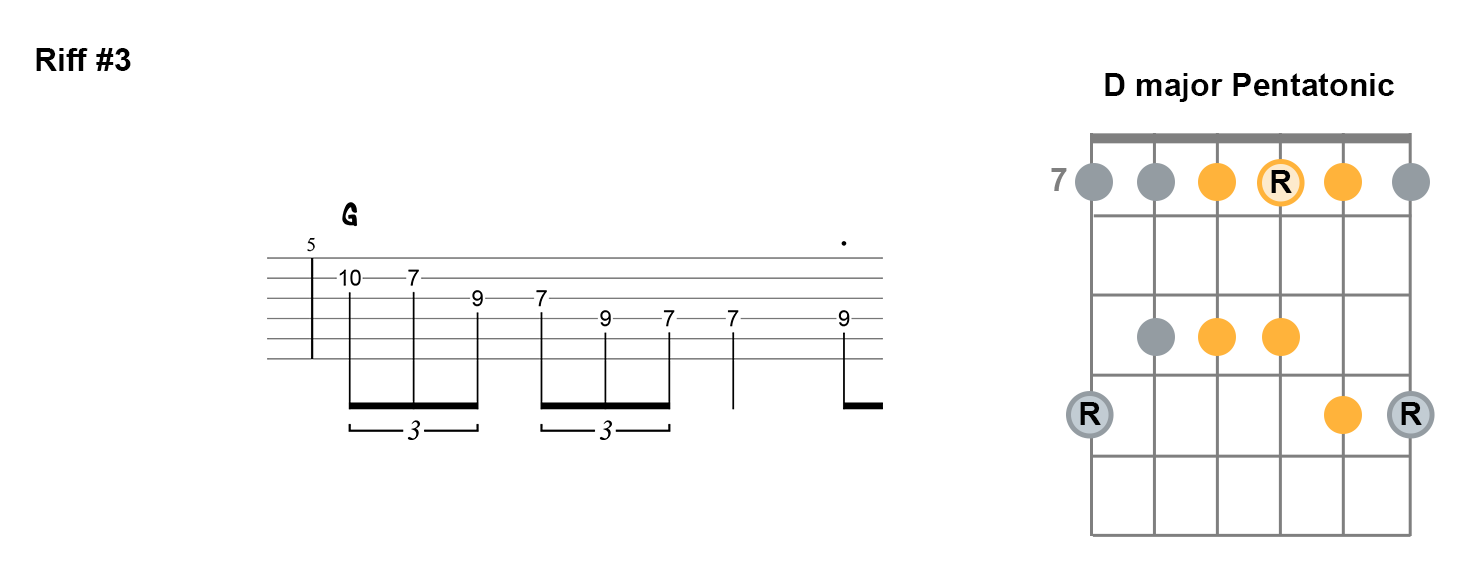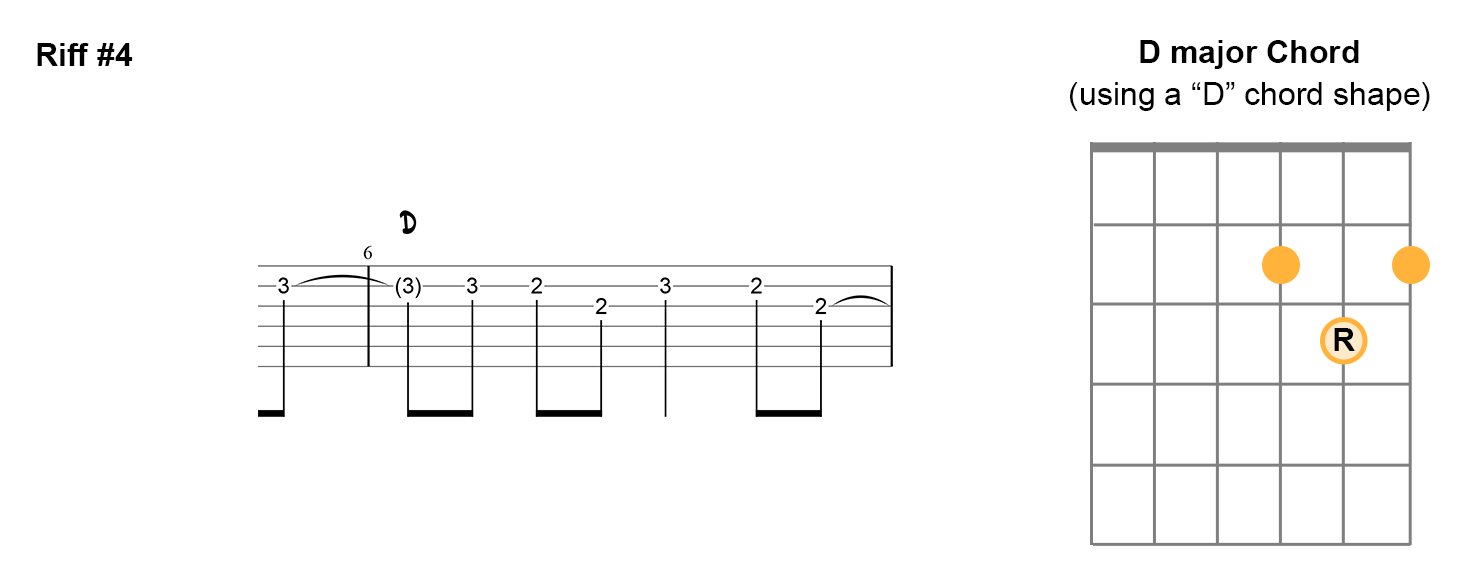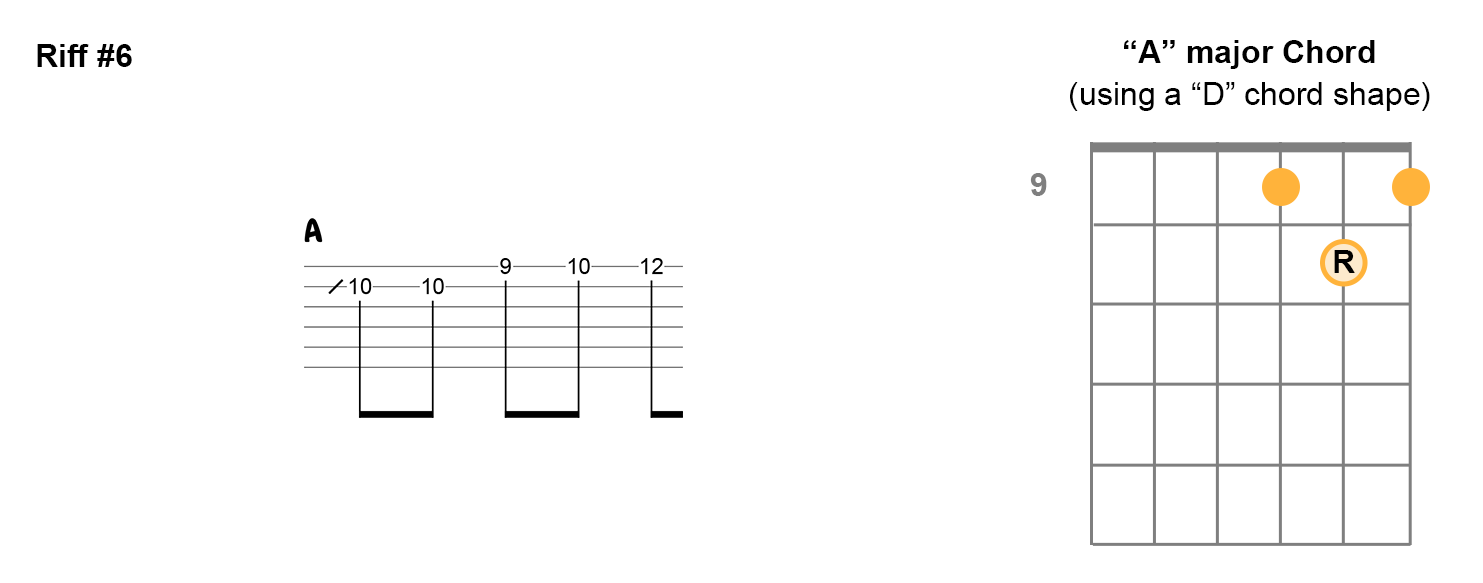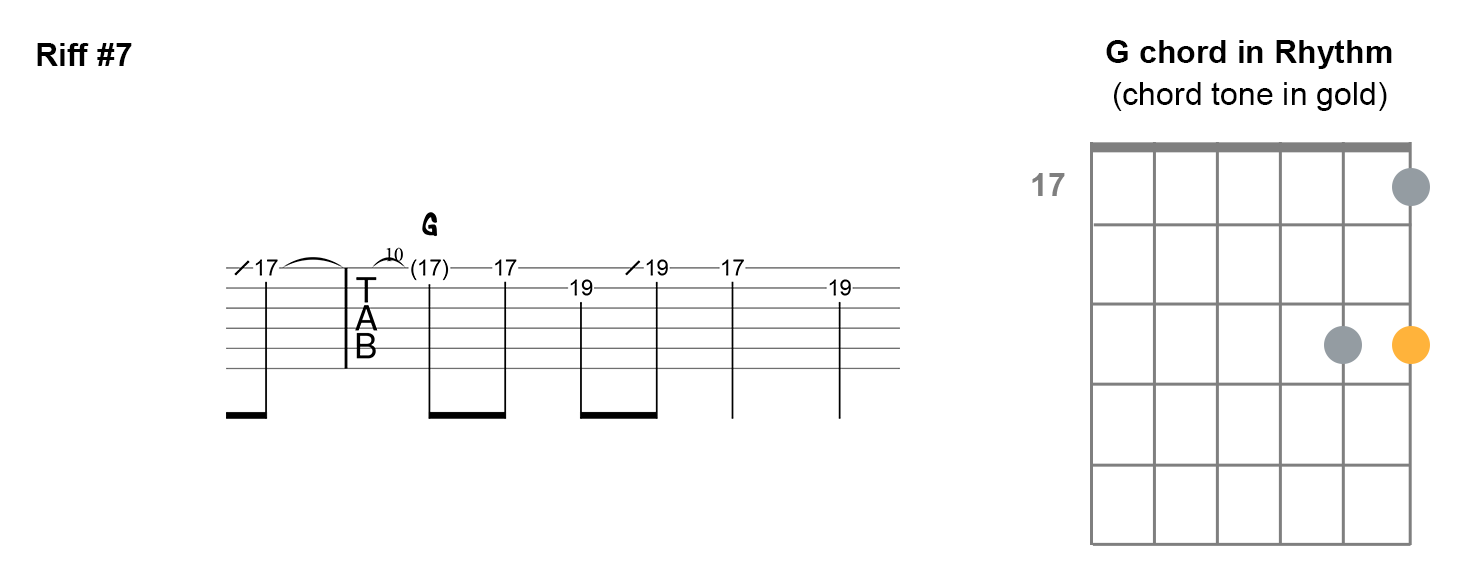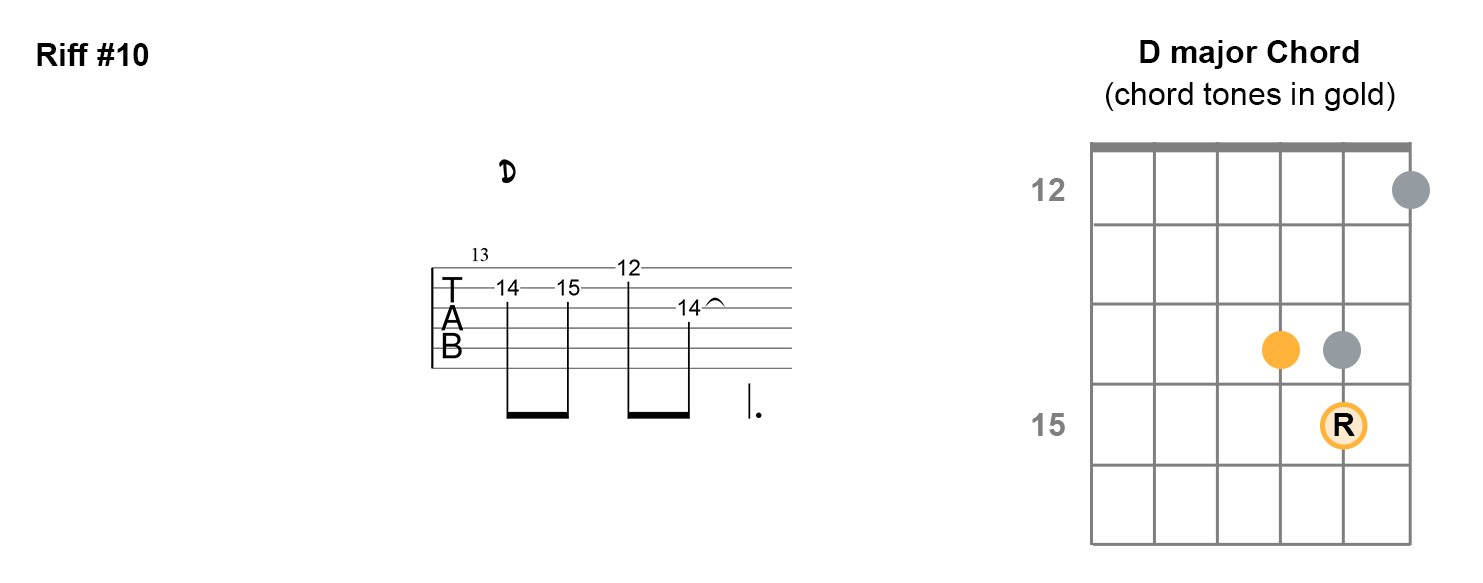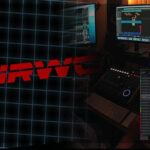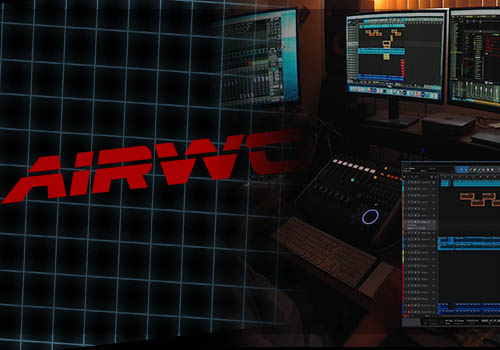This is guitar solo is a great example of good melody and hooks. The note choices in this solo also pay great respect to the underlying chord progression. Guitar Tabs can be downloaded or viewed in the Ultimate Guitar app.
Song Info
Band: Huey Lewis and the News
Album: Sports
Release Date: Sept, 15 1983
Guitarist: Chris Hayes
Riff #1
The solo starts with some clever use of arpeggios[1]. The first riff is an A arpeggio with an extra note added to the A chord (suspended 4th). This makes perfect sense because the rhythm section is playing an A chord.
Riff #2
The rhythm section changes to a G chord, and the next riff of the solo reflects this. This riff grabs 2 notes out of a G major chord and uses the note between them to act as a passing tone[2]. Notice the rhythm of this riff is very similar to the previous one. This type of rhythmic repeating motif is very common in creating memorable melodies and is used to great effect here. It also has a little bit of variation that will help bring us to the next musical phrase.
Riff #3
The rhythm section is still playing G but the lead guitar goes to a D major pentatonic[3] riff. We will discuss the music theory behind this later in this lesson. For now just be aware that the choice of D major pentatonic is used against a G chord in the rhythm but on the surface seems like an odd choice. As a final note on this riff, Chris Hayes (the guitarist who played this solo) ends his phrase on a note from the G chord.
Riff #4
For the 4th riff, the rhythm section goes to D and Chris repeats the rhythmic motif from earlier and uses a D arpeggio with another passing tone. Notice the familiarity of this riff. This is such a great example of creating a memorable melody. We have a recurring rhythmic pattern alongside a similar melodic pattern, 2 chord tones with a passing tone.
Riff #5
With this next phrase we see an increase in the intensity of the solo. Chris uses some slides moving through the “A” Mixolydian[4] scale going up the neck and targeting some chord tones along the way. I will talk more on the choice of Mixolydian when we discuss some of the theory in depth. The main thing to notice is that by targeting the notes from the D chord and then the A chord the Myxolydian is formed from the note choices. Ultimately Chris is focusing on chord tones and will continue to do so throughout the rest of the solo.
Riff #7
This riff starts the climax of the solo. From here the phrases become busier and have more intensity. There is also an interesting choice of notes here. There is only one chord tone in this phrase. This introduces some tension and adds to the intensity of the solo here. These are all still notes from the A mixolydian scale so they still feel like they belong but they are dancing around the underlying chord instead of just simply playing chord tones.
Riff #9
The rhythm section moves to a D chord and Chris starts to reign his pace in and also gets back to heavy use of chord tones. This is the resolve the solo needed after having a couple of riffs that introduced tension with so many non chord tones. We also have a new rhythmic motif introduced here that will get repeated in the next phrase.
Riff #11
This bend brings us a strong resolve as the solo is finishing out. The underlying chord is “A” major and the note we are bending into is “C#”. This is the major 3rd[5] of the A chord.
Riff #12
This phrase closes out the solo, very much like a cool down after running. The phrase moves through notes of the A mixolydian scale until we end at a slide toggling between the Major 3rd of the underlying G major chord and a sharp 4th[6]. This makes for a cool resolve that has a bit of a “floating” sort of feeling with the sharp 4th added against the G chord.
Music Theory
So let’s start off by pointing out that this song is not in the key of “A” major. Technically this song is in the key of D major. However, the song has a very strong pull to the A chord and that feels like home. D doesn’t act as our home base for this song even though we are using notes entirely from the D major scale. It is better to think of this as “A” Mixolydian.
“A” Mixolydian is the 5th mode[7] of the D major scale. It has all of the same notes as D major but the note A (and the chord A major) are where all notes in the scale want to resolve back to.
There is only one note difference between A major and A Mixolydian but it is a significant difference.
“A” major has a G# and “A” Mixolydian has a G natural. The rhythm section is using the G major chord very prominently and there is no G major chord in the key of A major.
Glossary:
- [1] Arpeggio: the notes of a chord played in succession, either ascending or descending.
- [2] Passing Tone: a nonchord tone prepared by a chord tone a step above or below it and resolved by continuing in the same direction stepwise to the next chord tone (which is either part of the same chord or of the next chord in the harmonic progression)
- [3] Major Pentatonic: a scale in which the tones are arranged like a major scale with its fourth and seventh tones omitted
- [4] Mixolydian: the 5th mode of the Major scale (uses the same notes as its parent Major scale but starts on the 5th degree of the Major scale it is derived from)
- [5] Major 3rd: a note that is 4 half steps above the root
- [6] Sharp 4th: a note that is 6 half steps above the root
- [7] Mode: any of several ways of ordering the notes of a scale according to the intervals they form with the tonic
